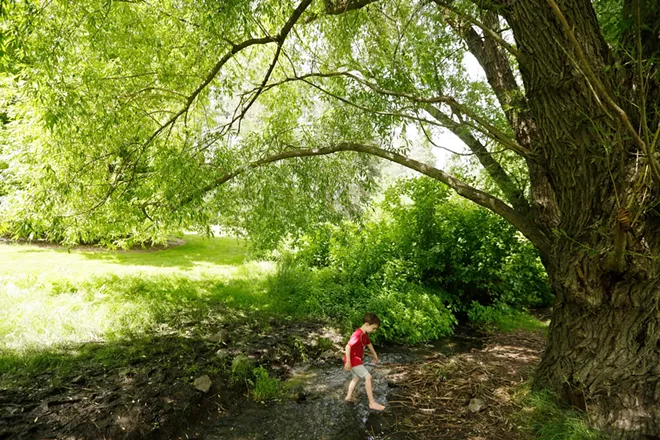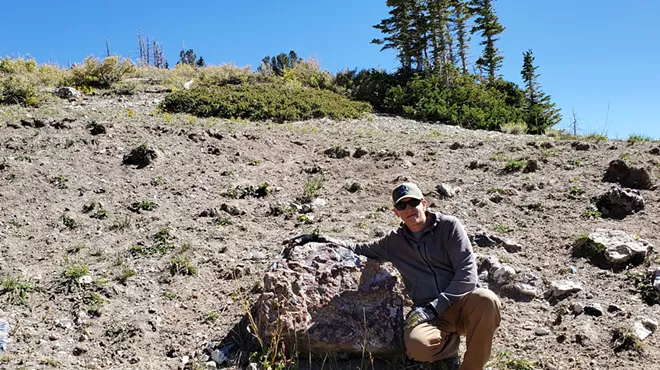A few years ago, I made a promise to myself that I would spend more time outside admiring this "nature" that everyone raves about. Quickly, I found out that there was way more to the outdoors than I ever imagined and fell head over hiking boots for plants, rivers and fresh air.
My newfound love was kindled and set ablaze by reading books about trees that reside in the Northwest, taking short day trips to go find said trees, and spending the rest of the day lounging in their shade. Identifying trees soon became my go-to summer hobby and my preferred outdoor activity.
Jasmine Vilar, development director for the Lands Council, recommends that beginner tree identifiers start in the comfort of their own backyard. Spokane's city government has a full list of street trees — trees approved to line the streets of the city — on their website (my.spokanecity.org/urbanforestry). A quick gander through the list of trees and a five-minute walk might lead you to a new species that you've yet to discover for yourself.
"I'm a big fan of neighborhood nature," Vilar says. "You shouldn't have to go too far in order to connect with nature and the outdoors. This is one of those fun activities that you can do without spending a dime."
Getting started in tree identification is as easy as looking out of a window and Googling some of the characteristics you can see for yourself. But Vilar says that getting up close and personal with the trees is highly recommended.
"You should use all of your senses when you're out there," she says. "Touch the leaves, smell the sap, bark and flowers — maybe don't taste anything unless you're sure that it's edible, that could lead to disaster."
BRANCHING OUT
Along with the trees you can find in your backyard and in your neighborhood, a short car ride will take newbie outdoor hobbyists to vast areas filled with various tree species ripe for identification.
In the Spokane area specifically, there's no place better for practicing tree identification than the John A. Finch Arboretum.
Located just off of Sunset Highway, the 56-acre natural area houses over 2,000 trees and shrubs. The arboretum's website offers self-guided walking tour maps and guides that help visitors easily identify just what botanical masterpieces they're looking at.
"There are tons of nonnative species at Finch that are neat and totally interesting," Vilar says. "It's a great place to start if you're looking to get familiar with more species. The street tree exhibit there is extremely accessible, and all of the trees are labeled for ease of identification."
If you ever find yourself near Moscow, the University of Idaho Arboretum and Botanical Garden is a vibrant, expansive area located just southwest of the city's downtown. The arboretum is divided into four sections based on the plant's geographical origin: Asia, Europe, Eastern North America and Western North America.
HEMLOCK HOLMES
Tree identification is a lot like detective work. You have to put together a set of clues in order to come to your conclusion. Vilar notes that tree and plant identification is a lifelong practice — you get better and can put clues together with ease the longer you've been doing it.
Some of the clues to look for are foliage type (are there needles or leaves?), the silhouette of the tree, the flowers and fruit that may or may not appear on the tree, and the texture of the bark. All of these attributes can help narrow the possibilities species-wise.
"Guidebooks are a great place to start," she says. "Grab yourself a book that focuses on your region's native species and then go from there. I recommend Plants of the Inland Northwest & Southern Interior British Columbia by Parish, Coupé and Lloyd. You can look up certain attributes of the tree and go from there."
If books aren't your style, there are plenty of plant/tree identification apps available for your smartphone. PlantNet lets users snap a photo of the tree or plant in question; then, voila, you've got your answer.
Though a broad and daunting topic, tree identification doesn't have to be strenuous or challenging. Vilar says that it's important to stay curious about and protect our nonhuman neighbors surrounding us.
"Before you start learning about all of the nature around you, it can start to feel a bit like a big, green wall," Vilar says. "Once you start breaking down that wall, it's like you're living in a world of new friends that stay with you wherever you go." ♦



